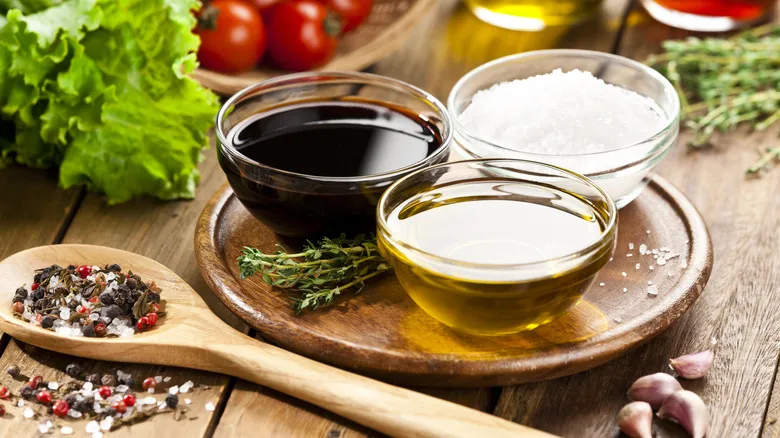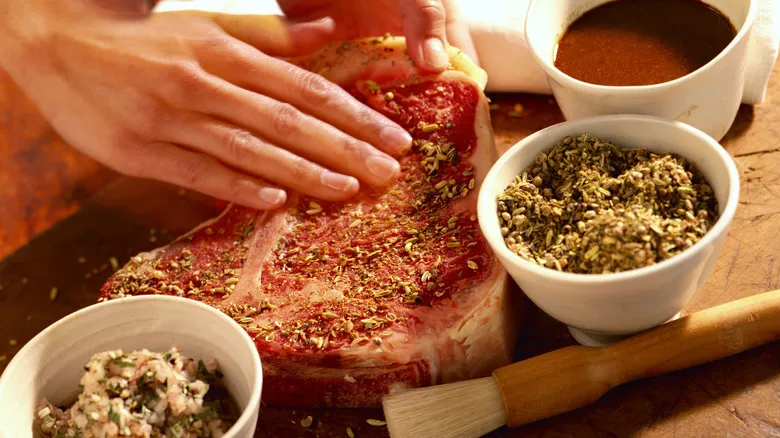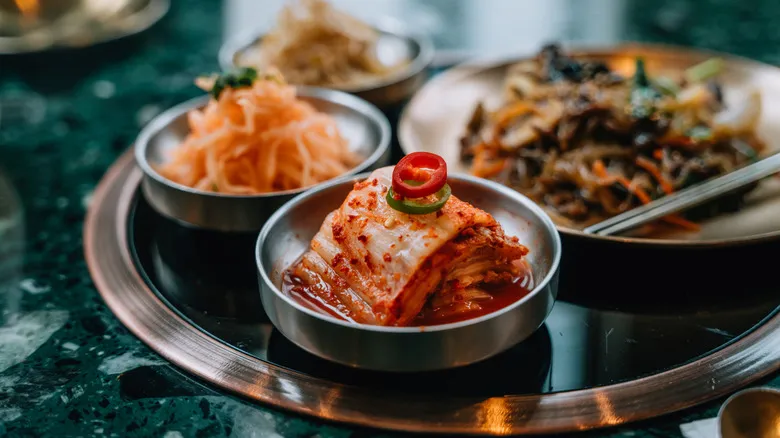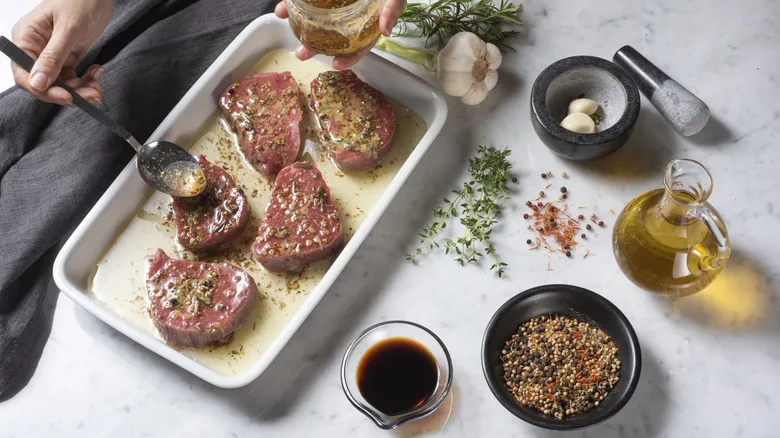The oils and the acids

To recall the right ratios of oils and acids (the first two elements in your marinade), think of it as a half of a half — meaning you should begin with ½ cup of oil for every pound of meat. The amount of acid should be half of that. So, if you have ½ cup of oil, you would use ¼ cup of acid. Additionally, half of the marinade should be oil, with the remaining ingredients adjusted accordingly.
The fat in the oil helps distribute the salts and other seasonings throughout the meat, while also adding moisture. Moreover, different cooking oils contribute their own unique flavors to the marinade. For instance, using safflower oil (which has a neutral taste) will yield a different flavor profile compared to a high-quality virgin olive oil (which has a more pronounced taste). Keep this in mind when selecting your oil.
The same principle applies to the acids in your marinade. The flavor will vary depending on whether you use lemon juice as the main acid or opt for apple cider vinegar or red wine vinegar. However, the acids do more than just enhance flavor; they also help break down tough connective tissues in many cuts of meat. While the half-of-half guideline is still relevant, it’s wise to be more cautious with the amount of acid. If the mixture isn’t potent enough, you can always add more later, but removing excess is a different challenge.
Finishing it off with seasonings and aromatics

The final two elements of flavor are the seasonings and aromatics. Often, people opt for familiar choices such as Dijon mustard, Worcestershire sauce, Sriracha, rosemary, thyme, black or white pepper, and possibly some ginger. These ingredients will ensure your steak pairs well with classic dishes like creamy sour cream mashed potatoes.
Crucially, sugar and salt are significant players in this process. While many think salt's primary function is to break down the meat, it does much more. Salt aids in moisture retention by drawing moisture from deep within the muscle fibers to the surface. Meanwhile, sugars help create that delightful sweet, caramelized crust associated with the Maillard reaction.
Alternatively, you can select seasonings and aromatics that align with a particular cuisine. For instance, if you're preparing a steak with an Asian flavor profile, you might use garlic, soy sauce, ginger, Sriracha or chili paste, and a touch of brown sugar, all combined with a base of sesame oil and rice vinegar. This type of steak would pair beautifully with an Asian rice dish or something similar. Additionally, ingredients like onions or garlic cloves fall into the aromatic category and serve as common flavor enhancers that aren't strictly spices. They often add herbal notes to a recipe rather than heat, subtly balancing the flavors of other ingredients while imparting their own unique essence to the marinade.
Recommended

The Underrated Kimchi Varieties You Need To Try According To An Expert

What Gives American Cheese Its Iconic Yellow Color?

Why Tomato Sauce Is Prone To Splattering

Spanish Vs Mexican Chorizo: Is There A Difference?
Next up

